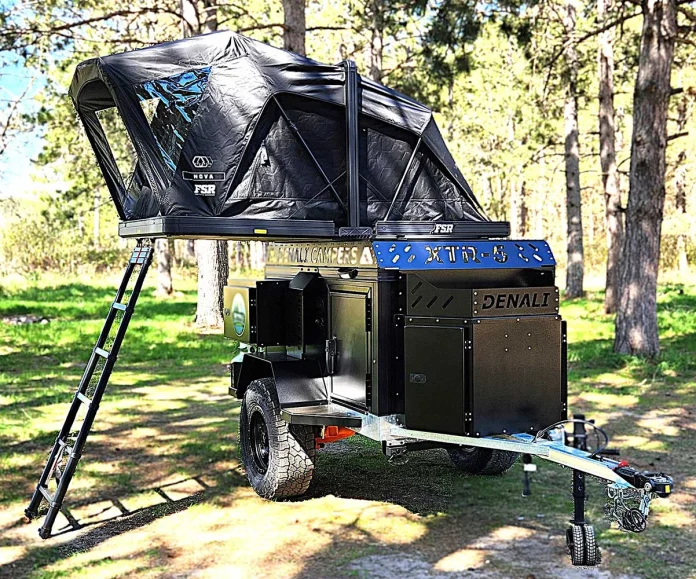One of the best parts of overlanding is sitting down to a meal after a long day on the trail. But anyone who has camped far from civilization knows that cooking in the backcountry isn’t as simple as firing up the grill at home. Between the challenges of food storage, unpredictable weather, and limited space, preparing meals off-grid can quickly turn into a test of resourcefulness.
Good food, however, is essential. It’s not just about calories—it’s about comfort, morale, and the energy needed to power through long drives, steep climbs, and setting up camp. A well-prepared meal can be the highlight of a trip, while poor planning can leave you hungry or scrambling to make do with what you’ve got. That’s why finding practical food storage and cooking solutions is one of the keys to a successful overlanding adventure.
Modern trailers like the Iron Peak Campers XTR-6 make this easier than ever. With a purpose-built rear galley, a 75L dual-zone fridge, a 30-gallon water tank, and ample food storage compartments, the XTR-6 shows how thoughtful design can turn trail cooking into a seamless part of the journey. In this article, we’ll explore proven strategies for food storage and cooking, highlighting how a trailer like the XTR-6 can elevate the way you prepare and enjoy meals off the grid.
Table of Contents
- The Role of Food in Overlanding Adventures
- Food Storage Challenges on the Trail
- Essential Food Storage Solutions for Overlanding
- Cooking Gear for Overlanding
- Enhancing the Camp Cooking Experience
- Tips for Planning Food on Multi-Day Trips
- When a Trailer Kitchen is Worth It
- Frequently Asked Questions
The Role of Food in Overlanding Adventures

Photo by Duet PandG via Shutterstock
Food plays a bigger role in overlanding than most people realize. Sure, fuel for the vehicle is critical, but fuel for your body is just as important. Meals keep you energized for long days of driving and navigating rough terrain. They also provide a sense of normalcy and comfort in an environment that can sometimes feel unpredictable. Something as simple as a hot breakfast or a hearty dinner can reset your mood and make the whole experience more enjoyable.
Cooking during an overland trip isn’t just about survival; it’s about building memories. Sharing a meal under the stars with family or friends becomes part of the adventure. The smell of bacon sizzling on a camp stove or the first sip of hot coffee on a chilly morning connects you to the moment in a way that freeze-dried meals rarely do. Good food makes good trips even better.
The challenge, of course, lies in how to make those meals possible when you’re far from grocery stores and power outlets. That’s why food storage and cooking systems are so vital. A trailer like the Iron Peak Campers XTR-6 provides built-in support to keep meals fresh and prep simple, which means less stress and more time enjoying the journey.
Food Storage Challenges on the Trail
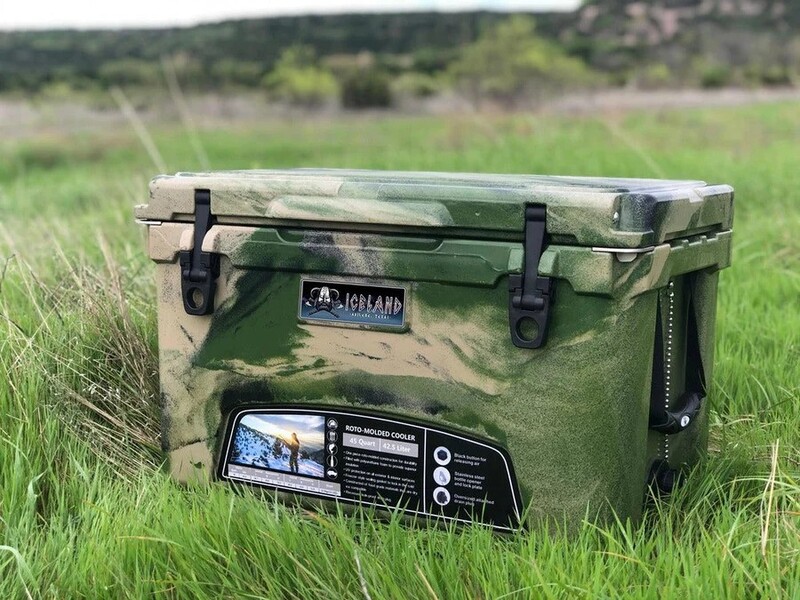
When you’re hundreds of miles from the nearest supermarket, food storage becomes one of the biggest hurdles. High daytime temperatures can spoil perishables, while freezing nights can damage produce and liquids. Dust, moisture, and even curious wildlife add another layer of complication. Without a proper system, keeping food fresh and secure is nearly impossible.
Traditional coolers like the Viking Series 45 QT shown above are ideal for short solo trips or adventures with a friend or two. They’re easy to carry, can be moved from your truck to the picnic table quickly, and in this case, can retain ice for up to a week!
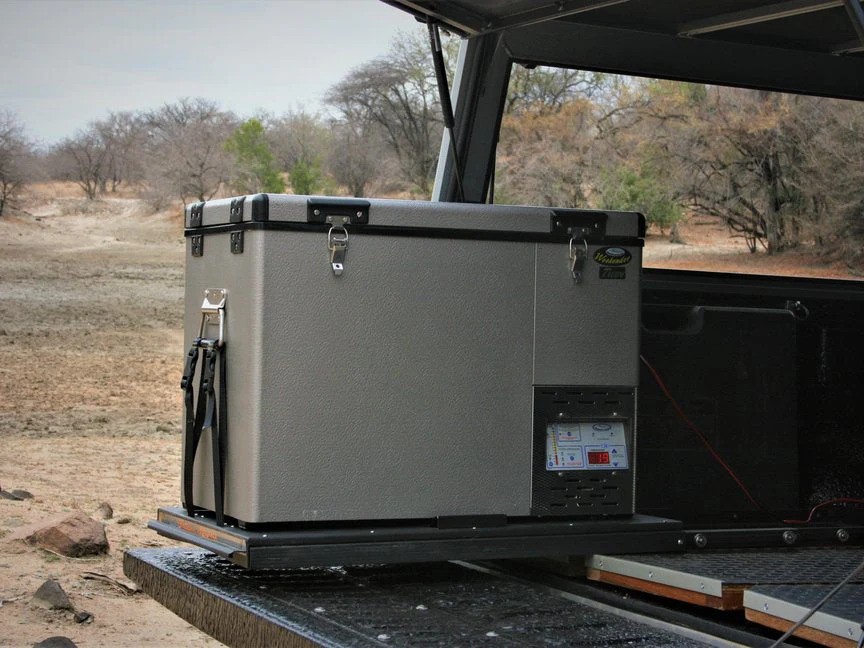
Vehicle-based food storage is another option. The Fridge Shuttle shown above, for example, can accommodate fridges up to 50L, meaning you can have all your food packed neatly away and easily accessible in the back of your rig.
Of course, you might be like me and need even more food storage and meal prep space. In that case, a trailer might be your best option.
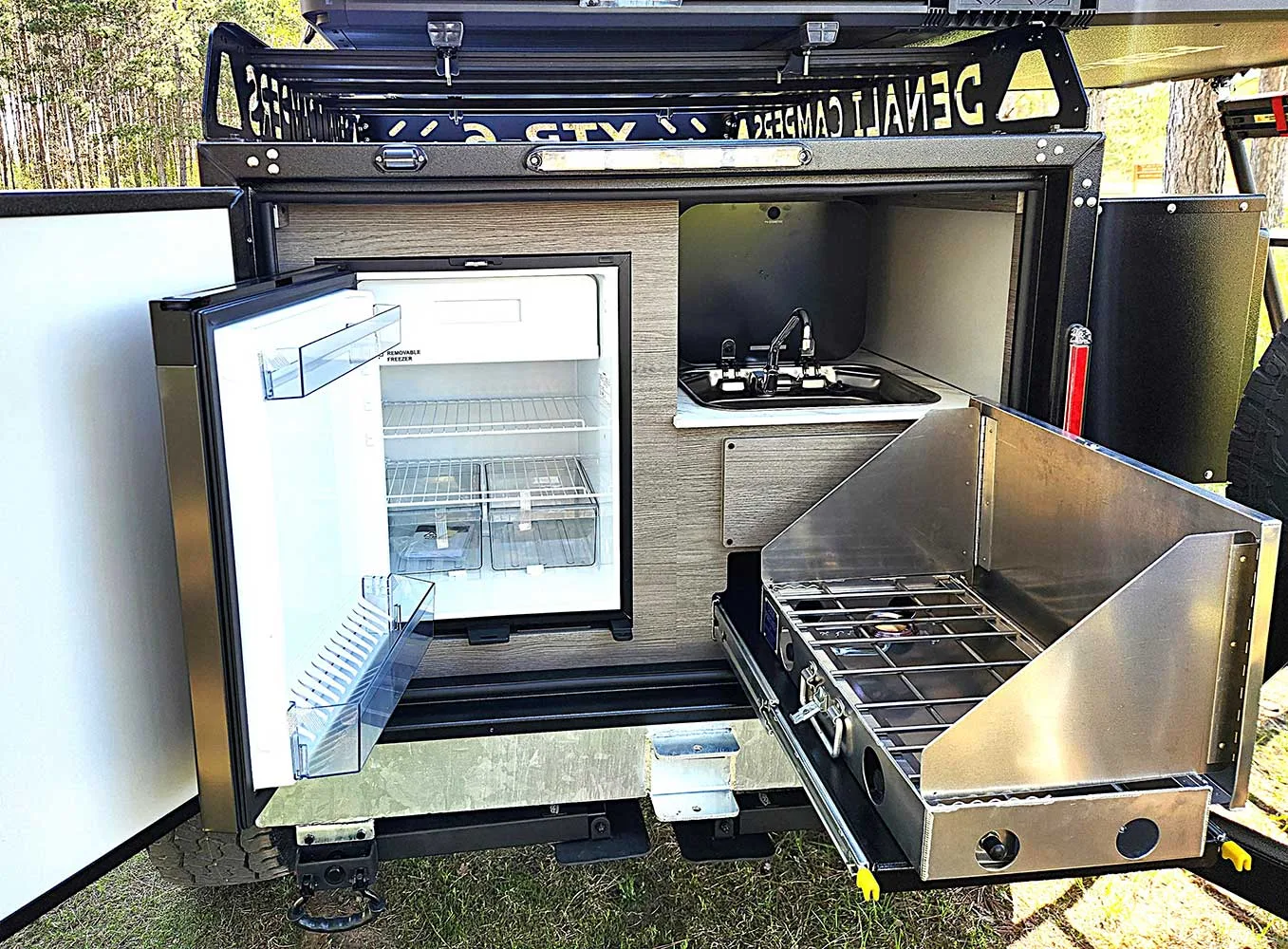
The Iron Peak Campers XTR-6, for example, is equipped with a 75L dual-zone upright fridge powered by a robust electrical system. With 46 cubic feet of interior storage and lockable side access doors, food stays secure, organized, and easy to reach. A dedicated system like this eliminates the guesswork and hassle of traditional food storage methods, allowing you to focus on cooking instead of constantly managing your supplies.
Essential Food Storage Solutions for Overlanding
One of the first decisions every overlander faces is choosing between a cooler and a fridge. Coolers are inexpensive and reliable for short weekend trips, but they’re limited by ice. Portable fridges, on the other hand, run off 12V power and can keep food at safe temperatures indefinitely. The XTR-6’s dual-zone fridge is an excellent example—it allows one side to function as a freezer and the other as a fridge, giving you more flexibility with meal planning.
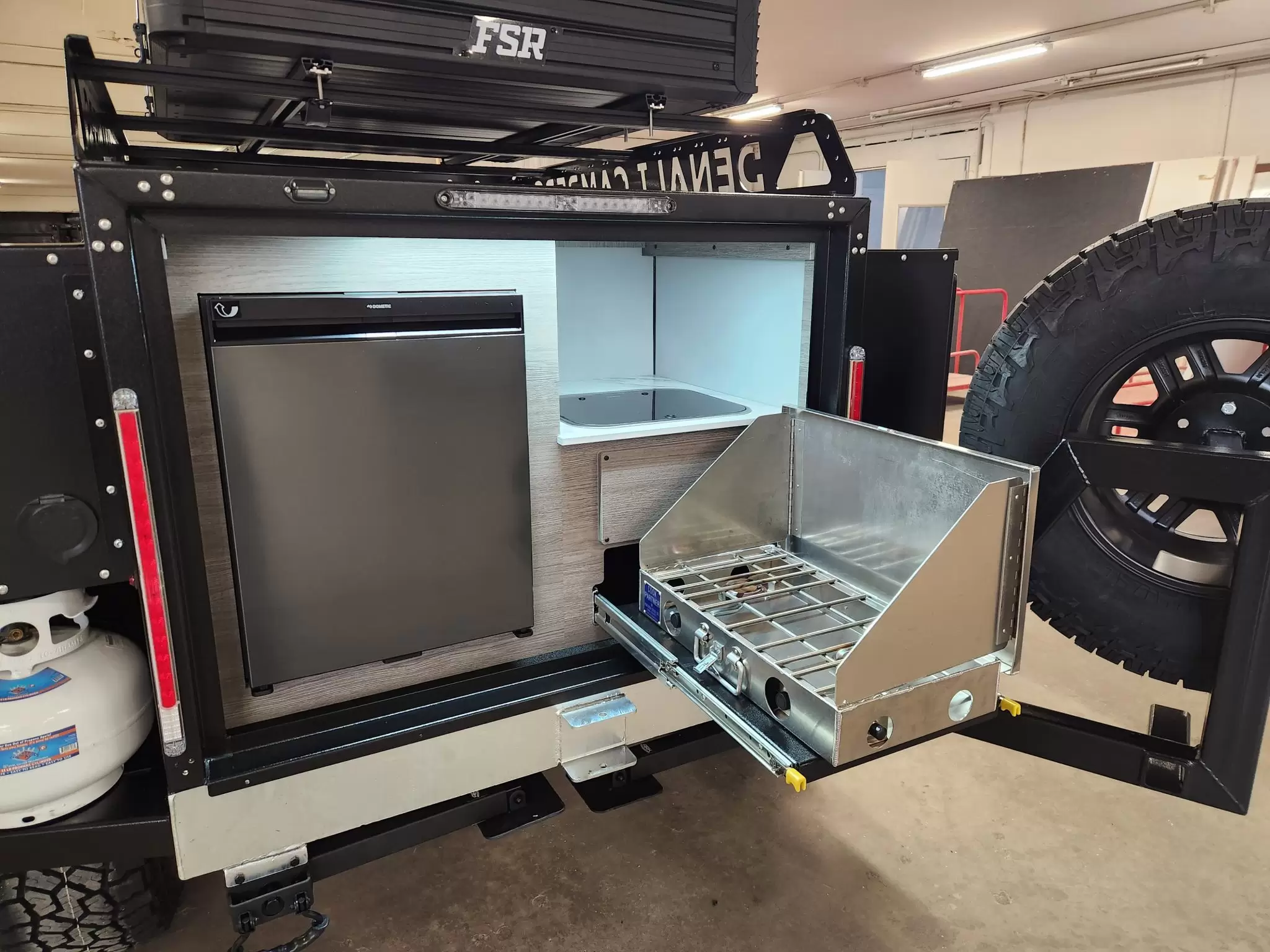
Dry food storage is just as important. Pasta, rice, canned goods, and spices don’t require refrigeration, but they do need to be protected from moisture and pests. Using weatherproof containers and organizing them in accessible compartments can save hours of frustration. The lockable side storage doors on the XTR-6 are ideal for this, keeping dry goods both secure and dust-free.
Water is another critical factor. Carrying jugs works for small groups, but longer trips require more capacity and convenience. The XTR-6’s 30-gallon water tank with a self-priming pump ensures you always have access to fresh water for cooking, cleaning, and drinking. Pair that with the trailer’s solar-powered 300Ah lithium battery system, and you have reliable power to keep fridges running and food storage uncompromised—even on extended trips.
Cooking Gear for Overlanding
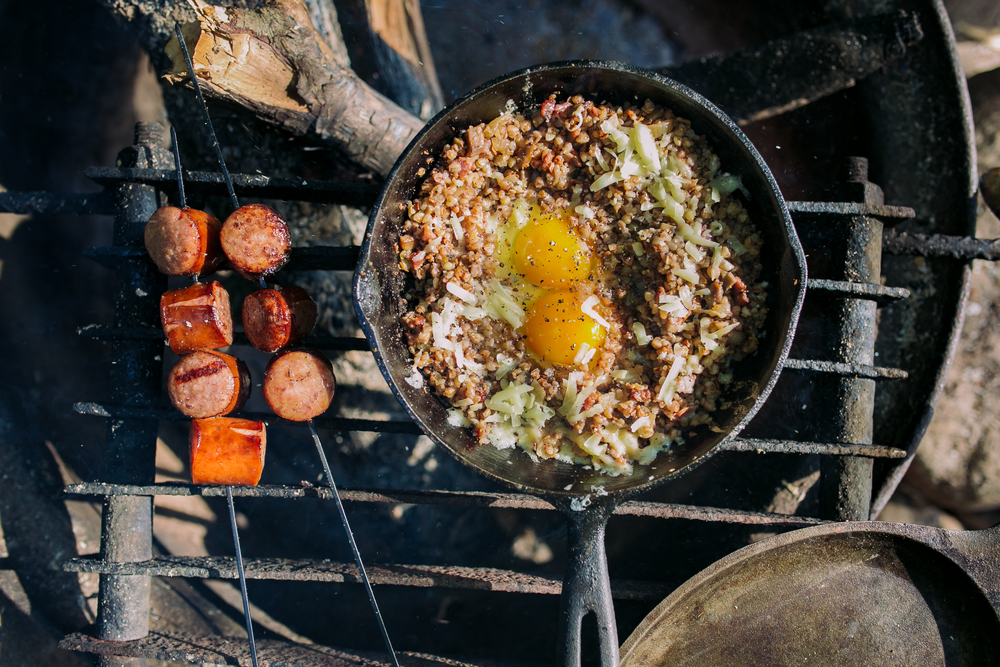
Photo by Svitlana Pimenov via Shutterstock
When it comes to cooking, the right gear can make the difference between a quick snack and a satisfying meal. Many overlanders rely on compact propane stoves, but having a built-in galley takes convenience to another level. The Iron Peak XTR-6 comes equipped with a pull-out 22” Partner Steel dual-burner cooktop, complete with windshields to keep the flame steady in gusty conditions.
Fuel reliability is another consideration. With dual 11-lb propane tanks, the XTR-6 provides enough capacity for cooking multiple meals a day without constantly worrying about running out. Portable systems can work, but built-in tanks streamline the process and reduce setup time. This is particularly helpful when you’re arriving at camp late and want to get dinner going quickly.
Counter space often gets overlooked, but anyone who’s tried chopping vegetables on a camp chair knows how important it is. The XTR-6 addresses this with a solid surface countertop and a folding aluminum prep table mounted to the galley door. Having designated prep space not only makes cooking easier, it keeps the process cleaner and more organized.
Enhancing the Camp Cooking Experience

Cooking after dark can be a frustrating experience if you’re relying on a headlamp or lantern. Integrated galley lighting, like the LED system in the XTR-6, makes evening cooking effortless. Add in the rear and side flood lights, and your whole camp kitchen becomes a usable workspace no matter the time of day.
Another overlooked aspect is hot water. Washing dishes with cold water is both inefficient and unpleasant. The XTR-6 includes on-demand hot water not just for the sink but also for an outdoor shower, adding comfort and practicality to camp life. A simple feature like this drastically improves cleanliness and convenience on long trips.
Organization also plays a role in enhancing the cooking experience. The pull-out stainless steel sink with a folding glass top keeps the galley streamlined, while lockable compartments keep cooking utensils and ingredients secure. The result is less time searching for supplies and more time enjoying meals around the fire.
Tips for Planning Food on Multi-Day Trips
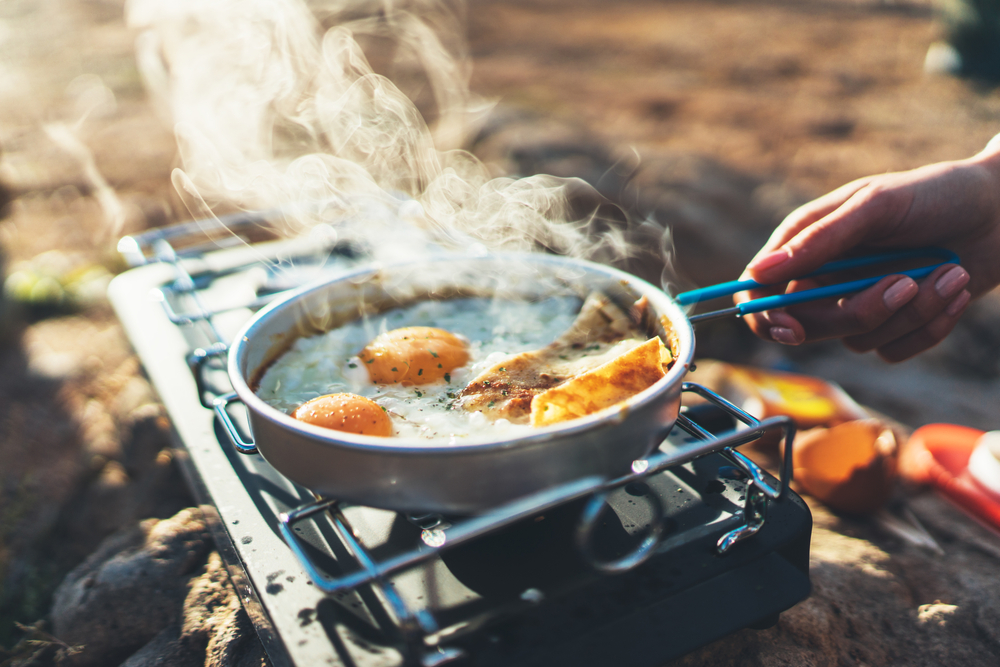
Photo by A_B_C via Shutterstock
Meal planning before hitting the road saves headaches later. Preparing ingredients in advance—like chopping vegetables or marinating proteins—can shave precious time off meal prep. Vacuum-sealing portions also extends shelf life and ensures everything fits neatly in your food storage compartments.
A mix of fresh and non-perishable items works best. Fresh produce and meats can be stored in a dual-zone fridge like the XTR-6’s, while dry goods like pasta, rice, and canned foods can serve as backups if fresh supplies run low. Don’t underestimate the value of spices and condiments—small touches that can turn a simple dish into something memorable.
One personal tip: always plan for at least one “comfort meal.” Whether it’s a favorite chili recipe or a pasta dish, having a meal you look forward to can boost morale when the days feel long. With a reliable food storage system, these small luxuries are easy to carry along without compromising space or freshness.
When a Trailer Kitchen is Worth It

Not every overlander needs a full trailer kitchen. If you’re on a quick weekend outing with minimal gear, a compact stove and cooler might be all you need. But for those who travel with family, take extended trips, or spend weeks off the grid, a trailer like the XTR-6 can be a game-changer.
At just 1,550 lbs dry weight and compact dimensions, the Iron Peak Campers XTR-6 remains agile enough for rough terrain while providing a fully equipped galley. Its combination of food storage, cooking gear, and water management makes it more than a convenience—it’s a practical solution for anyone serious about overlanding.
The decision often comes down to how much time you want to spend setting up camp versus enjoying it. A trailer with an integrated kitchen eliminates constant packing and unpacking, freeing up energy for the things that matter most: the adventure itself and the meals you share along the way.
Frequently Asked Questions
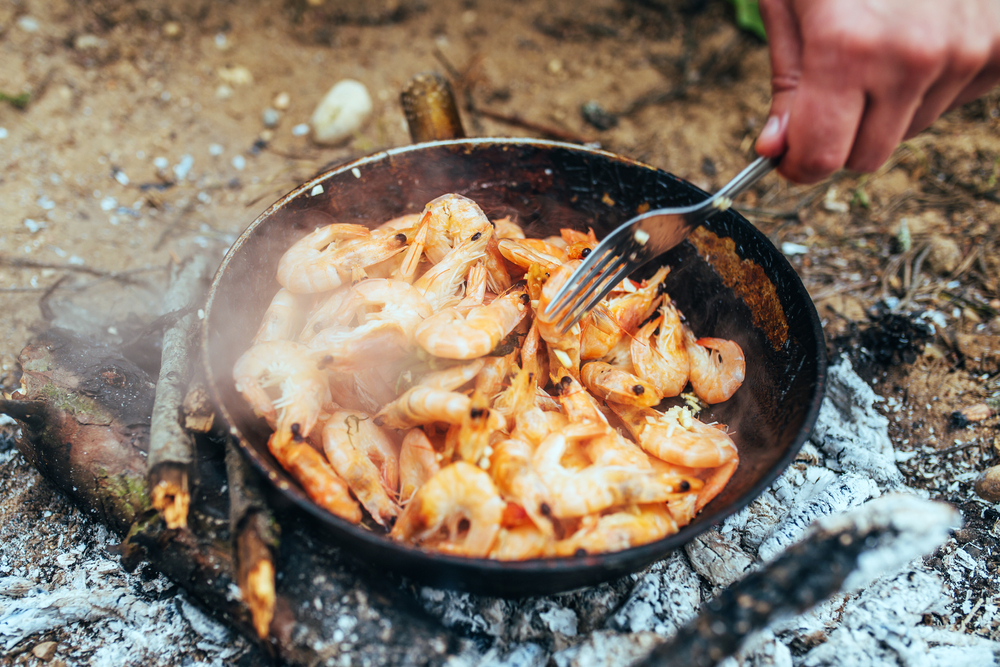
Photo by VanoVasaio via Shutterstock
How do you keep food fresh while overlanding?
The best way is to use a 12V fridge or dual-zone fridge powered by a reliable electrical system. Dry goods should be stored in sealed containers, and a trailer like the XTR-6 combines both approaches with its built-in fridge and lockable storage compartments.
How much water should you carry for cooking and cleaning?
A good rule of thumb is 1.5 to 2 gallons per person per day. The XTR-6’s 30-gallon tank provides ample water for cooking, drinking, and cleaning on extended trips.
What’s the advantage of a built-in trailer kitchen?
A built-in kitchen saves time and effort. With everything in place—stove, sink, fridge, and prep space—you don’t have to unpack and repack gear at every stop. This makes cooking more efficient and enjoyable.
Is a trailer fridge better than a cooler?
For short trips, a cooler may work fine, but for longer journeys, a trailer fridge is superior. It eliminates the need for ice, keeps consistent temperatures, and allows for more versatile food storage.
How do you organize food storage for a family trip?
Separate dry goods, refrigerated items, and snacks into dedicated compartments or bins. Label containers for easy access, and keep frequently used items in the most accessible locations. A trailer with dedicated storage, like the XTR-6, simplifies this process significantly.
Our articles might have affiliate links and the occasional sponsored content, but don’t sweat it – if you buy something, we get a little kickback at no extra cost to you, and we only hype products we truly believe in!




